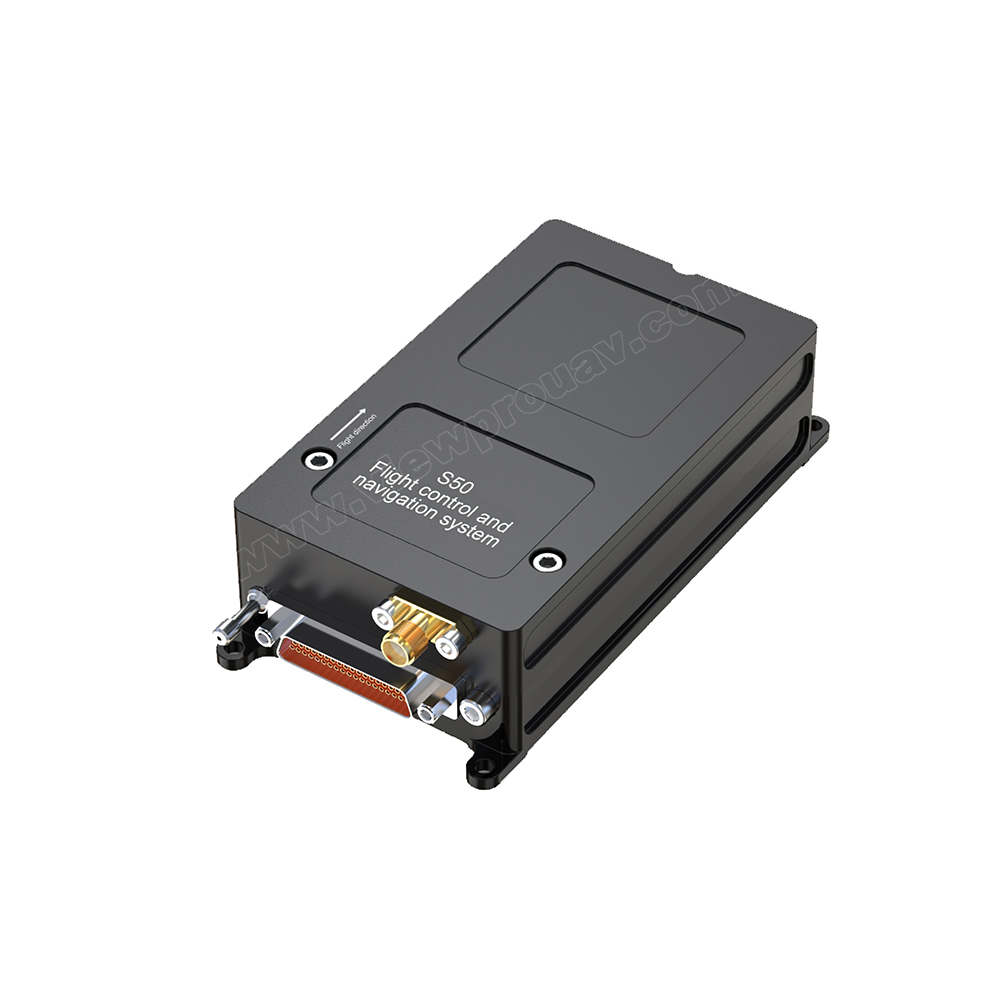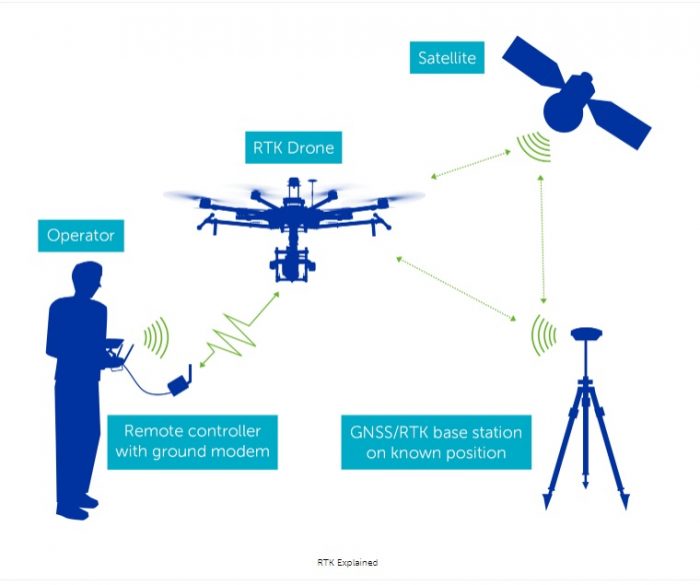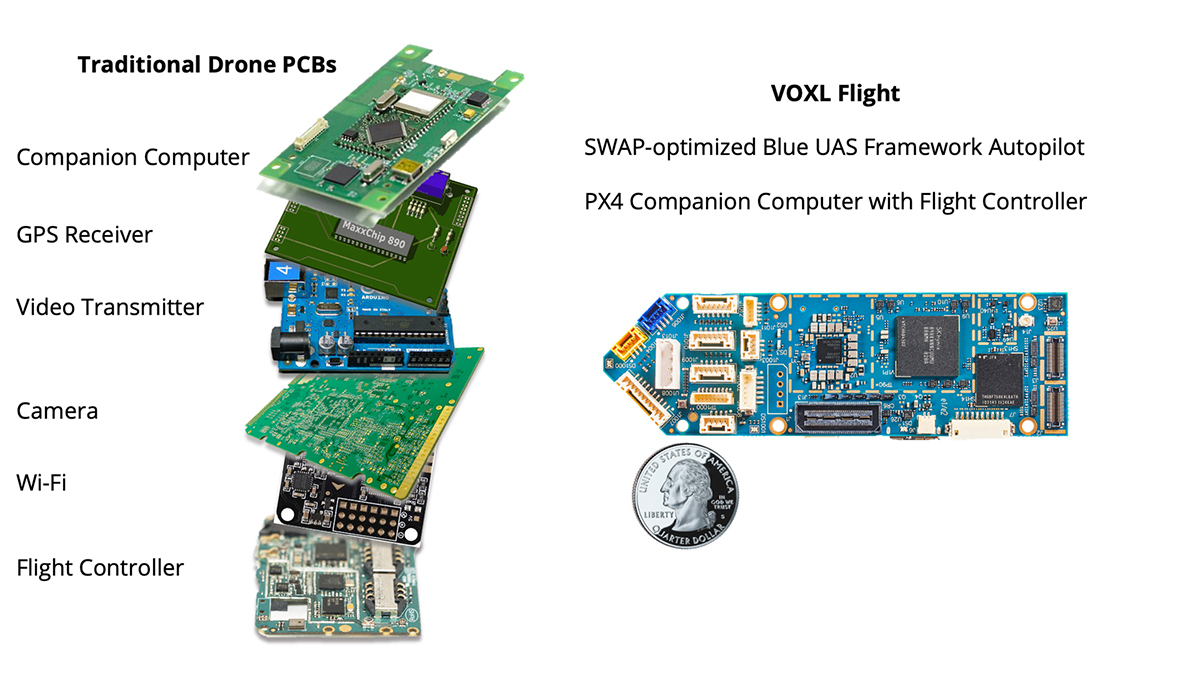SparkNavi Drone Flight Controller and GNSS/INS Made in Taiwan: Precision Navigation for Drones
SparkNavi Drone Flight Controller and GNSS/INS Made in Taiwan: Precision Navigation for Drones
Blog Article
Discovering the Role of Drone Trip Controllers in Enhancing Trip Security and Navigating Effectiveness
The innovation of drone technology has dramatically raised the value of flight controllers, which offer as the mind of these aerial vehicles. By incorporating real-time data from a selection of sensors, trip controllers improve trip stability and navigation effectiveness, guaranteeing that drones can run efficiently also in complex settings.

Recognizing Trip Controllers
Trip controllers are essential parts in the functioning of drones, offering as the brains that maintain and handle trip procedures. These advanced devices procedure data from numerous sensing units, consisting of accelerometers, gyroscopes, and GPS, to guarantee that the drone preserves its desired flight path. The trip controller interprets this data and executes commands based on pre-defined formulas, making it possible for the drone to react to environmental modifications, such as wind or barriers.
The primary function of a flight controller is to maintain stability during flight. It accomplishes this by making real-time changes to the drone's electric motors and control surface areas, making sure equilibrium and control. Furthermore, modern trip controllers include sophisticated features such as waypoint navigation, permitting automated flight paths and improved functional performance.
Understanding the style of flight controllers is critical for both professionals and hobbyists. They commonly consist of a microcontroller, firmware, and different user interfaces for sensing unit input and interaction. As innovation developments, trip controllers have come to be extra small and qualified, integrating expert system to improve decision-making procedures and adjust to complicated flight circumstances. This advancement represents a pivotal growth in the drone industry, paving the way for a lot more advanced applications and more secure operations.
Trick Elements of Flight Stability
Achieving optimal flight stability in drones depends on a number of vital elements that work in performance to ensure smooth and regulated operations. Central to this stability is the trip controller itself, which refines data from various sensors to keep the preferred trip mindset. This includes accelerometers and gyroscopes that determine motion and orientation, permitting for real-time adjustments to the drone's placement.
An additional important part is the digital rate controllers (ESCs), which manage the power delivered to the electric motors. By carefully adjusting motor rates in action to trip controller commands, ESCs help maintain equilibrium and combat disruptions caused by wind or sudden activities.
Additionally, the design of the drone's frame plays an essential role in trip security. A well-structured framework minimizes vibrations and boosts the total wind resistant profile, adding to smoother trip attributes. The assimilation of advanced formulas within the trip controller aids in predictive adjustments, making certain a receptive and adaptable flight experience.
Together, these elements create a natural system that enhances a drone's security, allowing for precise maneuvering and improved performance in different trip conditions.
Navigating Effectiveness Strategies
Effectiveness in navigating is crucial for enhancing drone procedures, particularly in complicated settings. Reliable navigating techniques improve the ability of drones to traverse difficult surfaces and prevent barriers, therefore boosting operational efficiency and safety.
One popular technique is the implementation of innovative GPS and inertial measurement devices (IMUs) that provide precise area tracking and orientation information. These technologies enable drones to determine optimal flight courses in real-time, considering numerous factors such as wind conditions use this link and prospective challenges.
One more technique involves the use of algorithms for course planning and optimization. Formulas such as A * and Dijkstra's algorithm can be deployed to figure out the most efficient route while decreasing power consumption and trip time. Furthermore, incorporating machine understanding designs can allow drones to adaptively pick up from their settings, improving navigating capabilities with experience.

Influence On Autonomous Drones
The integration of sophisticated navigation techniques has actually profoundly changed the abilities of self-governing drones, allowing them to operate with higher autonomy and precision. SparkNavi drone flight controller and GNSS/INS made in taiwan. These enhancements are primarily associated to advanced flight controllers that make use of real-time data processing and sensor blend, enabling drones to browse intricate environments perfectly
The effect on self-governing drones prolongs beyond simple navigation; it incorporates enhanced obstacle avoidance, improved security throughout vibrant problems, and boosted goal reliability. By leveraging algorithms that incorporate equipment understanding and man-made knowledge, drones can adapt to changing circumstances, making informed decisions that maximize their flight paths while reducing dangers.
Furthermore, the application of durable flight controllers has helped with the implementation of intricate jobs, such as aerial evaluations, delivery solutions, and farming tracking, with marginal human intervention. This ability not just simplifies operations however additionally reduces human error, therefore improving general security.
As an outcome, the operational scope of self-governing drones has actually expanded substantially, making them important tools in numerous industries. Their ability to carry out efficiently in varied circumstances emphasizes the critical role that advanced trip controllers play fit the future of unmanned aerial systems.
Future Trends in Trip Control
Frequently, developments in trip control modern technology are poised to redefine the landscape of drone operations in the coming years. Emerging patterns suggest a significant shift in the direction of enhanced expert system (AI) combination, enabling trip controllers to process real-time information much more efficiently. This advancement will certainly facilitate enhanced find out this here decision-making capabilities, allowing drones to adapt to vibrant environmental conditions autonomously.
Additionally, the implementation of maker understanding formulas is anticipated to improve anticipating maintenance, therefore reducing downtime and prolonging the lifecycle of drone components. This proactive method to upkeep will certainly be crucial as drone applications expand throughout numerous industries, from agriculture to logistics.

.png)
Finally, innovations in safe and secure communication methods will certainly deal with safety and regulative worries, ensuring that drones can operate perfectly in overloaded airspaces (SparkNavi drone flight controller and GNSS/INS made in taiwan). Collectively, these patterns direct in the direction of a future where trip control systems are not just smarter and more likewise qualified however reliable of running safely in an increasingly integrated airspace
Final Thought
In final thought, drone trip controllers are important to improving flight stability and navigation performance with the innovative processing of sensor data. By preserving optimal trip mindsets and employing advanced algorithms for path optimization and challenge evasion, these controllers dramatically add to the freedom and functional security of drones. As innovation remains to develop, better developments in trip control systems are anticipated, guaranteeing better efficiency and expanded capabilities in the realm of unmanned aerial lorries.
By integrating real-time data from an array of sensing units, flight controllers enhance flight security and navigating performance, guaranteeing that drones can run efficiently even in intricate environments.Trip controllers are indispensable components in the performance of drones, offering as the brains that manage and stabilize trip operations. Furthermore, contemporary trip controllers include advanced features such as waypoint navigating, enabling for automated flight courses and enhanced functional efficiency.
Central to this security is the flight controller itself, which processes data from different sensors to preserve the preferred trip mindset.In verdict, drone flight controllers are indispensable to improving flight stability and navigation performance through the innovative handling of sensor information.
Report this page